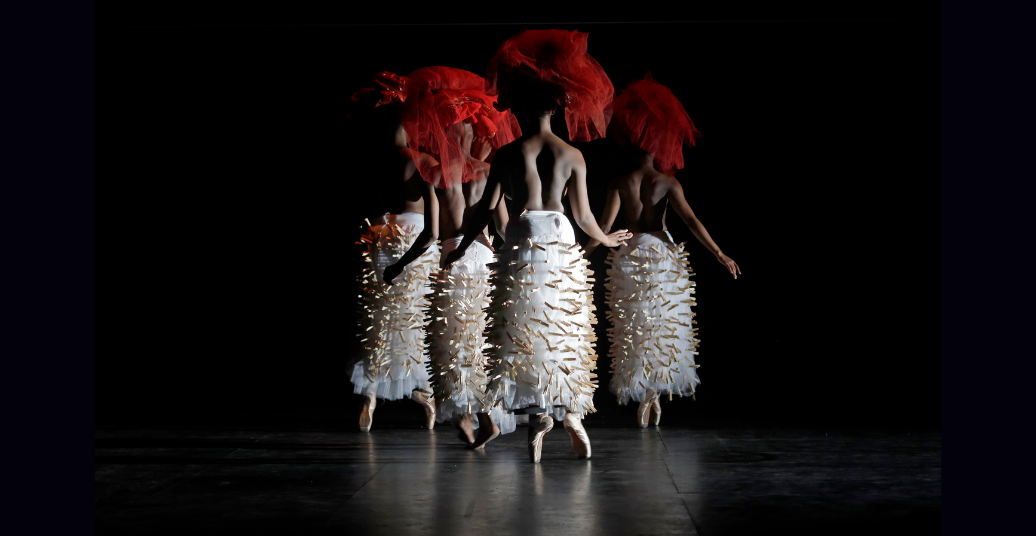Together with Hatched Ensemble, Mamela Nyamza questions the basic framework of existence and invites viewers to reconsider categorical attributions. The piece is being performed at HAU 1 on 5/6 June.
As we enter the theater today, the curtains are not drawn. The artists are already on the stage, stretching, warming up. They’re wearing comfortable sweaters and long, white skirts made of tulle. What is happening is initially private. We’re allowed to participate in personal processes. Then balletic music (Camille Saint-Saëns’ Carnival of the Animals) resounds. The sweaters are collected and the dancers position themselves between assorted wire figures, which remind me of a farm, but could also be exhibits in an art museum. These kinds of contradictions, which nevertheless coexist, reoccur throughout the piece.
With slow, graceful movements, the group of ten dancers moves across the stage in close proximity to one another. They grasp at the objects with long, gentle ballet arms, then float across the stage with them. A few quick, jerky head movements break the meditative slowness and remind me of a bird in its nest. The Carnival of the Animals keeps repeating itself. At first, the repetition is soothing to me. But eventually, I find myself wishing for an interruption, an escape. Like in a dreamworld, but trapped in a loop, the floating continues.
The idyllic stage scenery is suddenly disrupted by the noise of pointe shoes as they tiptoe across the stage in quick succession. The skirts amplify the soundscape, the trinkets attached to them reveal themselves to be clothespins, which rattle as they move. The sound of movement now almost drowns out the music, which suddenly ends as the voice of opera singer Litho Nqai fills the stage. With the same song, which appears to have inscribed itself in the performers’ bodies. For the first time, all the artists now take to the stage. Donning red hats (or scarves?), they extend, with momentum, in arabesque, jumping towards a line stretched horizontally across the stage. Just high enough to be unreachable, despite their best efforts. Only when they combine their efforts do they manage to reach and cross the line whose arbitrary role is revealed when it becomes a clothesline for the hats, which actually turn out to be dresses.
Now the dancers are newly clothed, in vibrant red, which is still strung up on the clothesline. The dance-like exploration of the tulle transitions from playing to throwing to hitting to tearing. The dresses transform into raincoats. Bit by bit, formerly naked skin is offered protection. Bit by bit, the balletic movements also transform into rhythmic stomping and collective sequences. The song becomes one with the movements and the noises produced by the movements as well as the musical accompaniment. A uniqueness emerges from the newfound language of movement and the soundscape, which not only complement one another but also coalesce into each other.
English translation by Melissa Maldonado
Hatched Ensemble by Mamela Nyamza was shown on on 5/6 June at HAU1.




